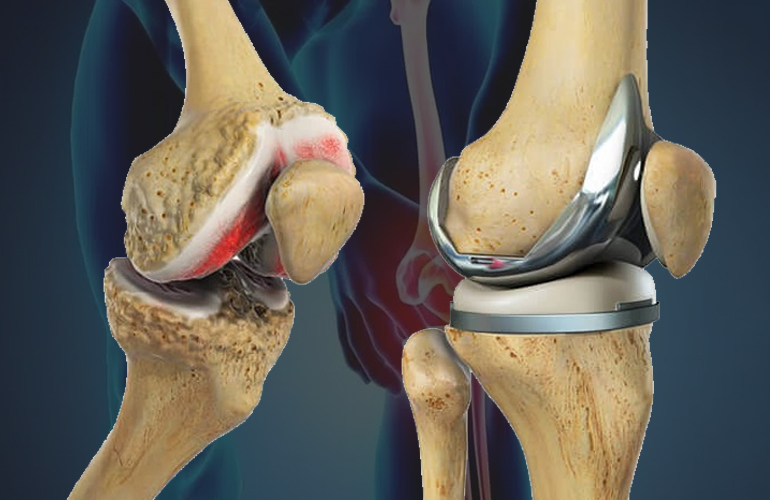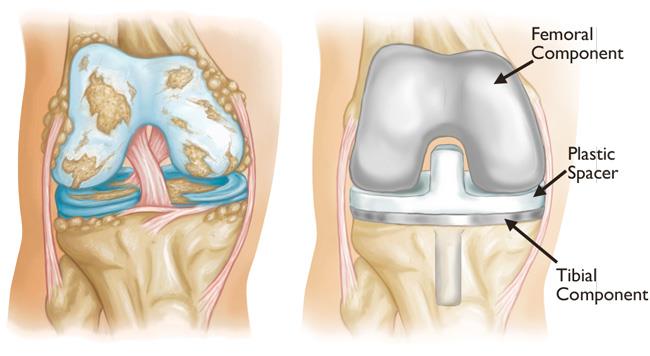Knee Replacement Surgery
Knee replacement can be extremely painful. Previously, opioids or narcotics were administered for pain relief. But excessive addition of opioids is not exactly effective for controlling pain.

Multimodal pain management has become an important part of the preoperative care of patients undergoing total joint replacement. The principle of multimodal therapy is to use interventions that target several different steps of the pain pathway, allowing more effective pain control with fewer side effects. Many different protocols have shown clinical benefit. The goal of this review is to provide a concise overview of the principles and results of multimodal pain management regimens as a practical guide for the management of joint arthroplasty patients.
Multimodal denotes administering two or more than two types of medications that work with different mechanisms. The following are the techniques used:
Pre-operative Femoral Nerve Block:
Prior to the surgery, a catheter is placed beside the femoral nerve for blocking it. This nerve is located in the upper thigh. Medication is delivered through the catheter for the nerve to be numbed for 24 hours. Thus, pain signals to the brain are blocked. This method reduces the use of narcotics and the consequent side effects.
Patient Controlled Analgesia (PCA):
This method is also known as ‘Pain Pump’. An intravenous pump is used to administer pain relief medications, such as oxymorphone or morphine, after the surgery. The control button of the machine could be pressed, by the patient for 6 to 10 times per hour. The machine is used for two post-operative days.
Oral Medications:

The oral medications include Non-Steroidal Anti-Inflammatory drugs or NSAID; such as Celebrex which is similar to aspirin, structurally. Alternatively, acetaminophen, such as Tylenol or its equivalent composition, can also be used.
Acetaminophen:
It acts on the Central Prostaglandin Synthesis and relieves the patient of pain through multiple mechanisms.
Epidural Analgesia:
It produces lower pain scores and involves less time for achieving physical therapy goals. However, this is subject to side effects such as dizziness, urinary retention and itchiness.
Gabapentinoids:
These medications include membrane stabilizers such as Gabapentin and Pregabalin.
The objective of multimodal treatments is to provide quick relief to the patient and immediately so. Earlier the rehabilitation, more successful will be the knee replacement surgery.
Dr. Kunal Makhija for Consultation
Dr. Kunal Makhija’s approach is centered on providing personalized, patient-focused care. With a passion for improving the lives of his patients, he offers the best possible treatments backed by years of experience. If you’re looking for an expert in robotic knee replacement surgery and hip replacement surgery, Dr. Kunal Makhija is the surgeon you can trust for top-quality care and optimal results.
To schedule a consultation with Dr. Kunal Makhija, or if you have any questions about robotic knee or hip joint replacement surgery, feel free to reach out.
Conclusion
multimodal pain management techniques have revolutionized the way knee replacement surgery patients experience recovery. By combining various methods, such as femoral nerve blocks, patient-controlled analgesia, and oral medications, pain can be effectively managed with fewer side effects. These innovative approaches promote faster rehabilitation, ensuring that patients can return to their daily activities more quickly. If you’re considering knee replacement surgery, Dr. Kunal Makhija’s personalized, patient-focused care ensures that you receive the most advanced treatments for a smoother and more successful recovery. Don’t hesitate to contact his clinic for a consultation to learn more about how these cutting-edge techniques can benefit you.
